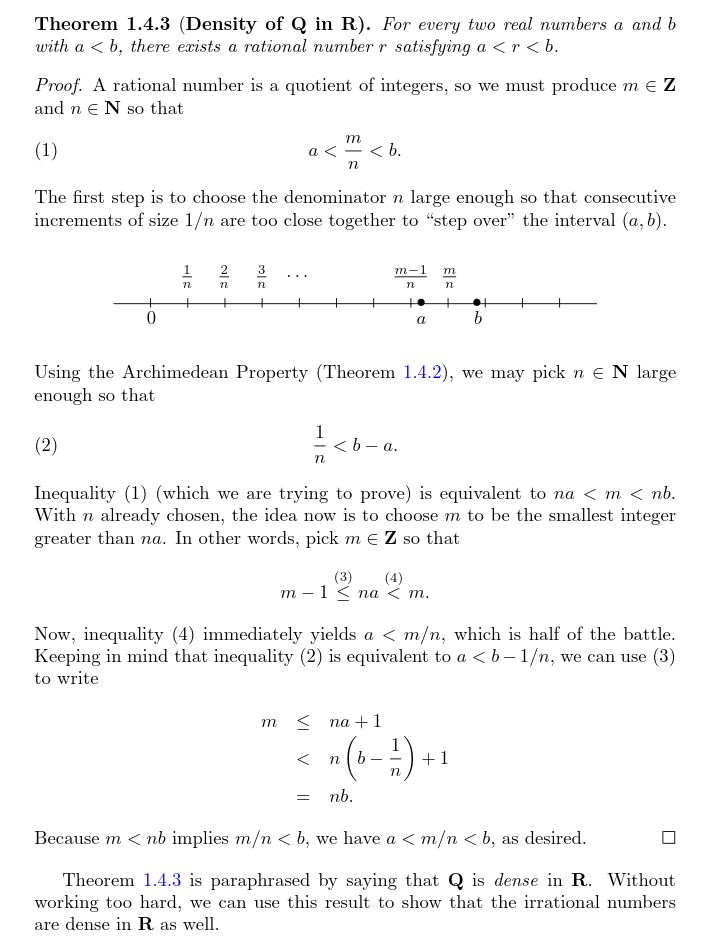Math and science::Analysis::Tao::05. The real numbers
Archimedean property
The Archimedean property is a property of the reals. Roughly, it says: there are no infinitely small or infinitely large elements, when compared to the rationals. It also says that the naturals are not bounded by any real.
Archimedean property
- Given any number \( x \in \mathbb{R} \), there exists an \( n \in \mathbb{N} \) satisfying \( n > x \).
- Given any real number \( x > 0 \), there exists an \( n \in \mathbb{N} \) satisfying \( \frac{1}{n} < x \).
This is Abbott's description of the Archimedean property.
Tao presents the more common form which goes like:
For any two positive reals \( x \) and \( y \) there exists a natural number \( n \) such that \( ny > x \).
Density of \( \mathbb{Q} \) in \( \mathbb{R} \)
The Archimedean property leads to an important result:
For any reals \( a, b \in \mathbb{R} \) such that \( a < b \) there exists a rational \( q \in \mathbb{Q} \) such that \( a < q < b \).
Proof
The below proof assumes the truth of two statements:
- Interspersing of integers by rationals: let \( x \) be a rational number, then there exits an integer \( n \) such that \( n \ge x \ge n+1 \).
- Cauchy sequences (sequences of rationals) are bounded (by rationals). Note that a sequence \( (a_n)_{n=1}^{\infty} \) is bounded by \( M \in \mathbb{Q} \) iff \( \forall i \in \mathbb{N}, |a_i| \le M \).
Proof.
- First prove 1. Let \( x \in \mathbb{R} \). \( x \) is a Cauchy sequence of rationals, and is thus bounded by rationals. Any rational is also bounded by integers, so we have the desired result by transitivity.
- For part 2, rewrite as \( n > \frac{1}{y} \) and apply part 1.
Density of \(\mathbb{Q} \) in \( \mathbb{R} \), proof.

Source
Tao, p114, p115Abbott, p21
